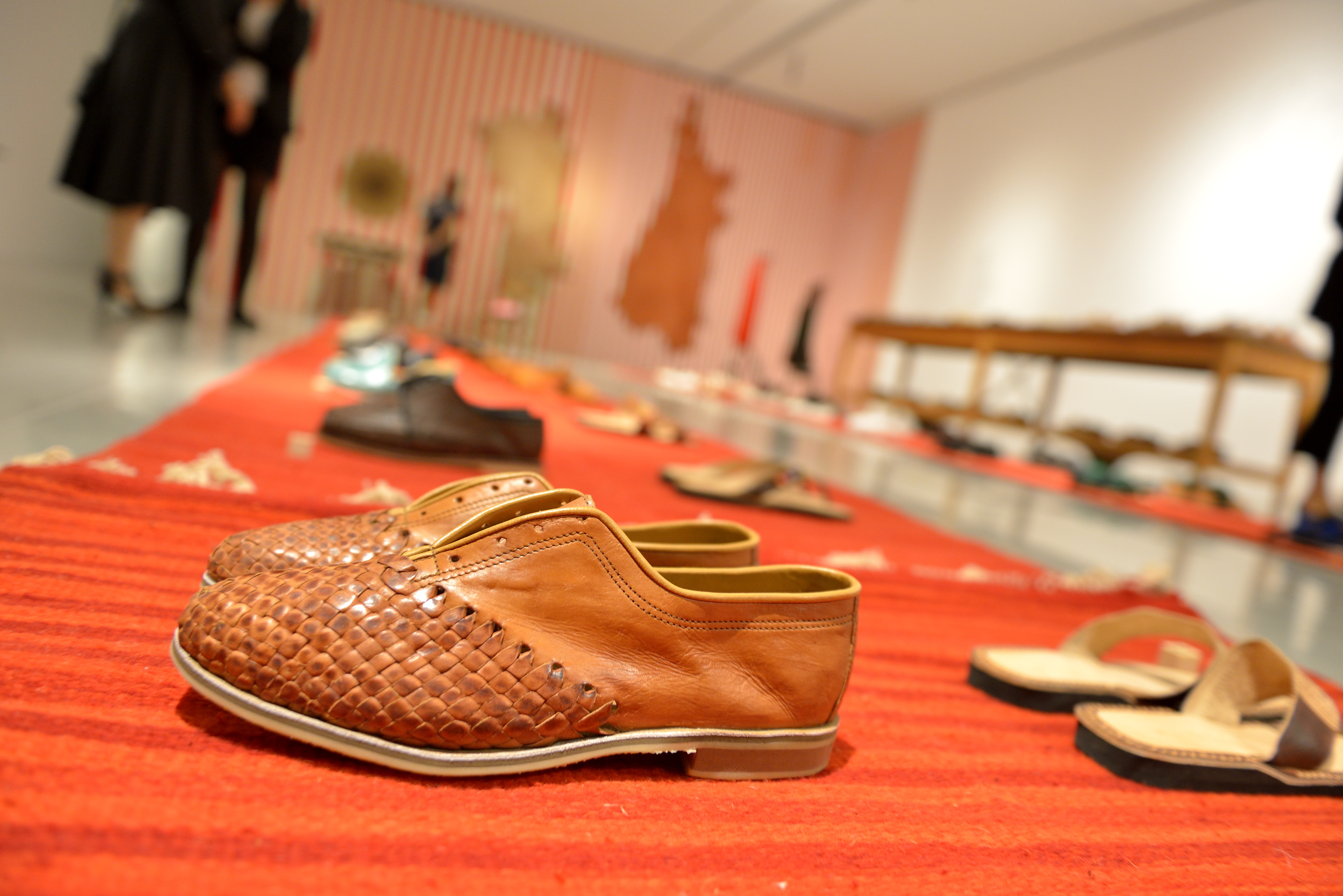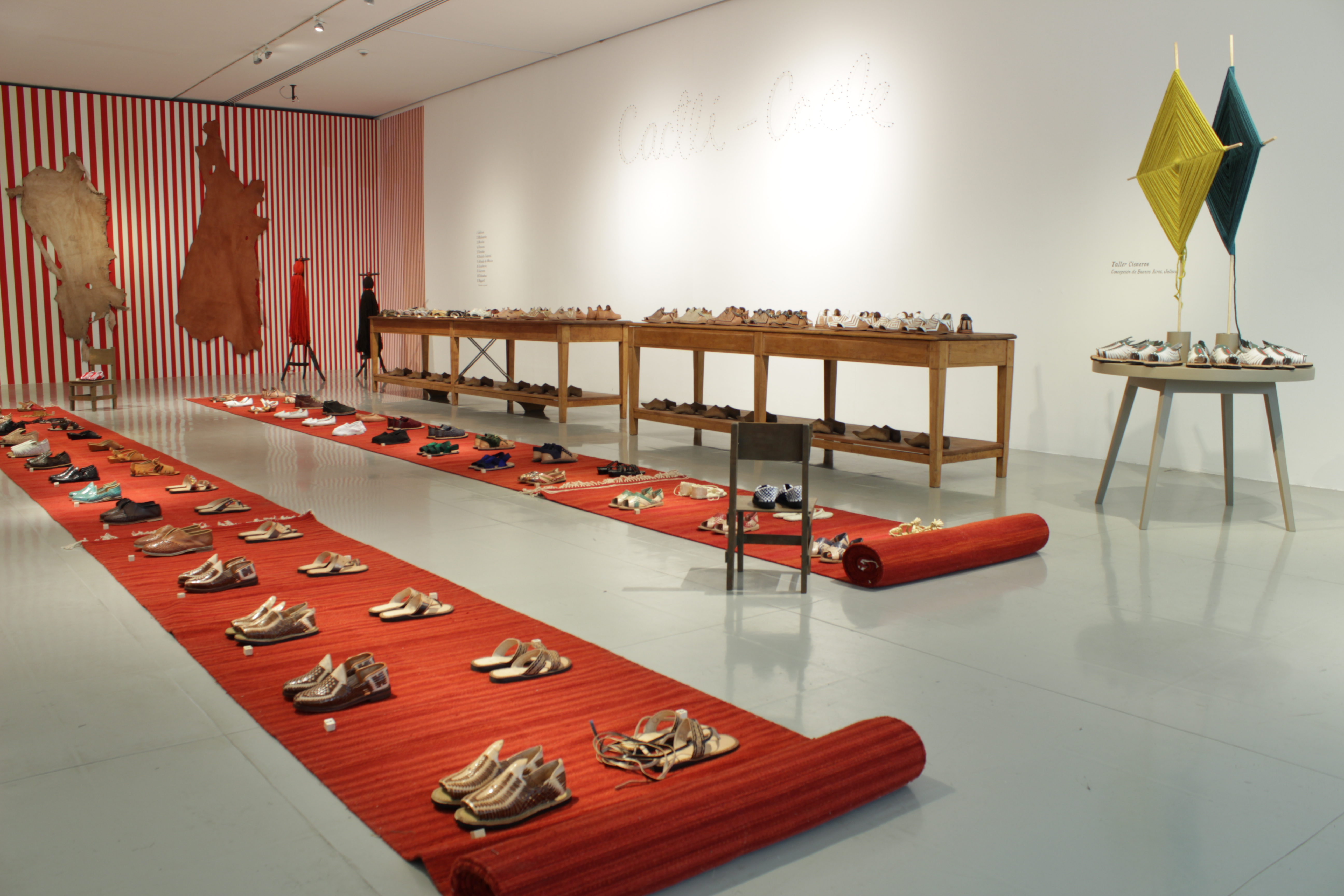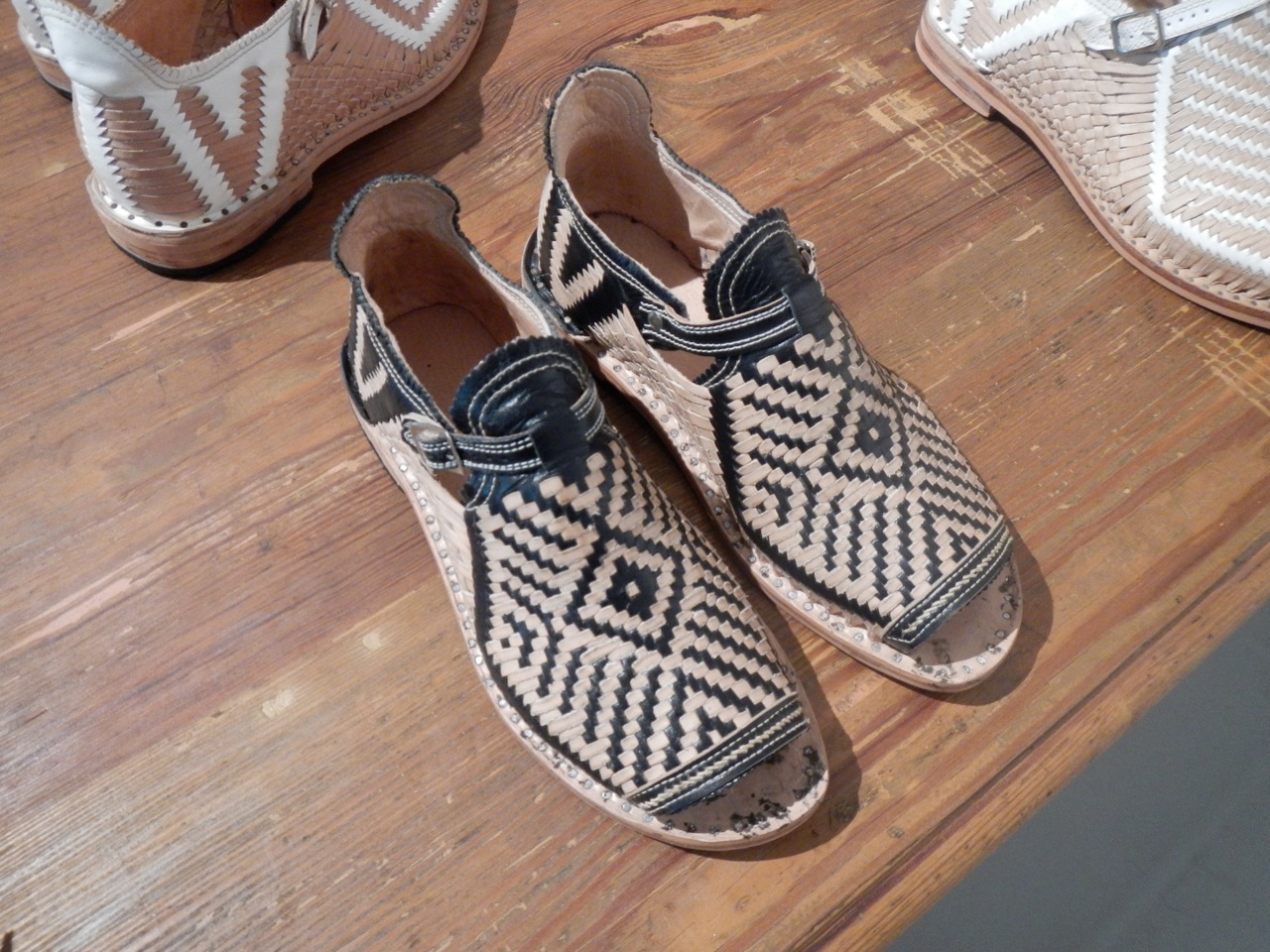Cactli-Cacle
Claudia Fernández
Del 13 de noviembre al 9 de marzo de 2014
Involucrada en proyectos de responsabilidad, interés y cambio social, Claudia Fernández ha desarrollado iniciativas como Meteoro (2002-2009) y Módulo de reciclaje (2011), que toman el entramado de realidades sociales y materiales como materia prima e intentan transformar positivamente el entorno. En ellas, la artista plantea estructuras y modelos alternativos que hablan de la interacción entre seres humanos y nuestra relación con el medio ambiente. La investigación artística de Fernández también busca adentrarse en la redistribución y el aprovechamiento de objetos existentes. Creando escenarios necesarios para el intercambio de visiones en el contexto actual, sus proyectos indagan en posibilidades para generar mecanismos de valorización de objetos hechos a mano, que hoy han perdido un espacio.
Con la intención de difundir y propiciar conciencia de nuestro legado, el display creado para el Museo de Arte de Zapopan, conformado por diversos elementos hechos a mano incluyendo un tapete de lana hecho en telar y bancos de tule, comparte un creciente muestrario y colección de huaraches, realizados por artesanos mexicanos. Cactli – Cacle, enfocado en el huarache tradicional de alta calidad, es parte de una iniciativa amplia para difundir el valor estético del trabajo manual de artesanos mexicanos cuya labor corre peligro de desaparecer. El huarache se produce en todo el país y, aunque no es oficialmente patrimonio cultural de México, hace parte de nuestra historia y cultura, permaneciendo como una prenda de uso cotidiano desde tiempos prehispánicos. La falta de canales de distribución y exposición de los huaraches artesanales, sumado a la imposibilidad de competir con el mercado de bienes industriales importados de materiales sintéticos, ha distorsionado la percepción del valor del trabajo artesanal.
Lejos de pretender hacer del huarache un objeto fetiche y sin funcionalidad, este display así como otras formas que tomará el proyecto cuando se presente en espacios de distinta naturaleza, tiene la finalidad de difundir un oficio manual y revertir la inercia acelerada del mundo contemporáneo. En la sucesión de actos amorosos, espirituales y estéticos –como explica la artista– el arte contemporáneo es capaz de establecer plataformas para lidiar con problemáticas culturales complejas, como ésta.
*Cactli: del náhuatl, ‘zapato’.
Cacle: derivado de ‘cactli’, es una palabra utilizada para referirse a un zapato. Se usa hoy comúnmente para nombrar los zapatos de los niños, ‘cacles’.
Cactli-Cacle
Claudia Fernández
From November 13 to March 9, 2014
Having participated in projects promoting social responsibility, interest and change Claudia Fernández has developed initiatives like Meteoro (Meteor) (2002-2009) and Módulo de reciclaje (Recycling Module) (2011), which use the frameworks of social and material realities as raw material and aim to positively transform the environment. In these, the artist proposes alternative structures and models that deal with the interaction between human beings and our relationship with the environment. Fernández’s artistic research is also aimed at examining the issue of the redistribution and use of existing objects. Creating the spaces necessary for the exchange of visions in the context of today’s world, her projects explore the possibilities for creating new mechanisms for valuing hand-made objects, which in today’s world have become less important.
The display created for the halls of the Zapopan Art Museum has the goal of spreading and creating consciousness about our heritage and is made up of various hand-made elements. Among these are a wool rug made on a loom, stools made of tule and, among others, a large collection of huaraches, which are also hand-made by Mexican craftsmen from different states in the country. Cactli – Cacle, focused on the highest-quality traditional Mexican huarache also forms part of a broader initiative in process in which different artisanal objects are researched in order to spread information about the aesthetic value of the manual labor involved in their creation. The huarache is produced throughout the country, and although not officially recognized as part of Mexico’s cultural heritage, it forms part of our history and culture as an everyday garment that has been used since pre-Hispanic times. The lack of channels for the distribution and exhibition of the artisanal huaraches, added to the impossibility of competing with the dominant market of imported industrial goods made from synthetic materials, has distorted the perception of the value of artisanal work. Today this trade is at risk of disappearing.
Far from aiming to make the huarache into an iconic object without purpose, this display and the continuing research accompanying it, along with the other forms the same project will take on when it is presented in spaces of a different kind, has the ultimate goal of spreading knowledge about a manual labor and reversing the rapid inertia of the contemporary world. In a succession of loving, spiritual and beautiful actions—as the artist explains—contemporary art has the ability to establish platforms to deal with complex cultural problems, like this one.
Cactli: from the Nahuatl word for shoe.
Cacle: derived from the word ‘cactli,’ it is used to refer to a shoe. Today it is commonly used as a name for children’s shoes, ‘cacles.







